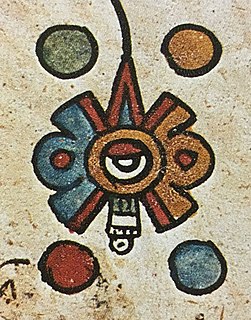
The nascent state (Statu Nascenti) is defined as a psychological process of destructuration-reorganization where the individual becomes capable of merging with other persons and creating a new collectivity with a very high degree of solidarity.

The nascent state (Statu Nascenti) is defined as a psychological process of destructuration-reorganization where the individual becomes capable of merging with other persons and creating a new collectivity with a very high degree of solidarity.
This concept was first defined by Francesco Alberoni, a prominent Italian sociologist, journalist, and professor in Sociology, in his book Statu Nascenti. It is one of the three social states Alberoni identified as traversed by collective movements. [2] He explained that individuals who go through this condition experience a strange episode that causes them to have an alternative view of existence. [3] Such anomaly is said to liberate an individual from prohibitions but is also temporary, existing in reaction to its reception by social institutions. [4] This experience has also been referred to as "depressive overload" in Alberoni's Movement and Institution, and is attributed to the perception of too much contradictions. [5] In the context of social analysis, Alberoni identified fetishism, addiction, and obsession, among other factors that inhibit the subjective realignments as prerequisites to a nascent state. [6]
It is said that individuals who go through the same experience or participated in the same nascent state share an understanding and makes them profoundly similar. [7] This entails the restructuring of the fields of experiences to new ends so that participants share an affinity that also marks their distinction. [8] Alberoni also posited that the individual who reached this state tends to seek others who share the same view, which launches the birth and growth of movements. [9] According to Alberoni, "Up till now, sociologists, psychologists, and philosophers have displayed a sort of repugnance or embarrassment in admitting that there is something in common—or better, something identical—to be found both in great historical processes like Islam, the French Revolution, or the Russian Revolution and in such personal, banal phenomena as the experience of falling in love."[ citation needed ]
In his book Falling in Love and Loving, Alberoni defends that there are similarities to be found between massive collective movements and love relationships:
In an analogous way, the falling-in-love process is the simplest form of a collective movement. [...]
The definition given of the falling-in-love process (i.e. the nascent state of a collective movement made up of two people) offers us a theoretical slot in which to position this mysterious phenomenon of collective movements. Not only, but the same definition provides us with an extraordinary tool for investigating the nature of all such movements.
Falling in love is seen as the nascent state of a collective movement formed by only two people. According to Francesco Alberoni, the phenomenology of falling in love is the same for young people and adults, for men and women and for homosexuals and heterosexuals. This is because the structure of the nascent state is always the same. The feeling of meaning experienced in this relationship is reinforced by a joint effort to overcome obstacles and to escape entropy. [10]
There is also the case of the experience that leads an individual to become a priest. Such experience leaves an indelible mark so that even if he is reduced to the status of the laity, his disposition remains. [7] Nascent state has also been likened to the concept of networked flow, which is said to be an offshoot of the feeling of liminality. [11] This experience is created by the sensation of sharing objectives and ideals such as in the case of organizations that are aiming to introduce change. [11]
Nascent state was also used to describe the existence of the so-called revolutionary sect. The experience that alters the outlook or orientation involves the failure of social solidarity. The revolutionary sect emerges as a form of the social system's reconstructive response where the unique experience prompt individuals to collectively reach an alternative interpretation and attempt to create an alternative whole by opposing the existing order. [12] A variation of this nascent state is the so-called indigenous movement. It is said to have emerged in the 1960s after an increase in awareness of common struggle that takes place within a political-historical context. [13] Local indigenous peoples started the movement after a discontinuity from life. Their critique of the state and their common feeling lead to a solidarity or a mobilization centered around a charismatic individual who is challenging the system. [13] There are scholars who identify this movement among other similar cases of social movements as a precursor to the foundation of new political parties as demonstrated by the Front National and La France Insoumise in France and the Podemos or Ciudadanos in Spain. [14]

Pentecostalism or classical Pentecostalism is a Protestant Charismatic Christian movement that emphasizes direct personal experience of God through baptism with the Holy Spirit. The term Pentecostal is derived from Pentecost, an event that commemorates the descent of the Holy Spirit upon the Apostles and other followers of Jesus Christ while they were in Jerusalem celebrating the Feast of Weeks, as described in the Acts of the Apostles.

A social movement is a loosely organized effort by a large group of people to achieve a particular goal, typically a social or political one. This may be to carry out a social change, or to resist or undo one. It is a type of group action and may involve individuals, organizations, or both. Social movements have been described as "organizational structures and strategies that may empower oppressed populations to mount effective challenges and resist the more powerful and advantaged elites". They represent a method of social change from the bottom within nations.
Collective consciousness, collective conscience, or collective conscious is the set of shared beliefs, ideas, and moral attitudes which operate as a unifying force within society. In general, it does not refer to the specifically moral conscience, but to a shared understanding of social norms.

Falling in love is the development of strong feelings of attachment and love, usually towards another person.
Anarchism in South Africa dates to the 1880s, and played a major role in the labour and socialist movements from the turn of the twentieth century through to the 1920s. The early South African anarchist movement was strongly syndicalist. The ascendance of Marxism–Leninism following the Russian Revolution, along with state repression, resulted in most of the movement going over to the Comintern line, with the remainder consigned to irrelevance. There were slight traces of anarchist or revolutionary syndicalist influence in some of the independent left-wing groups which resisted the apartheid government from the 1970s onward, but anarchism and revolutionary syndicalism as a distinct movement only began re-emerging in South Africa in the early 1990s. It remains a minority current in South African politics.

National identity is a person's identity or sense of belonging to one or more states or to one or more nations. It is the sense of "a nation as a cohesive whole, as represented by distinctive traditions, culture, and language". National identity may refer to the subjective feeling one shares with a group of people about a nation, regardless of one's legal citizenship status. National identity is viewed in psychological terms as "an awareness of difference", a "feeling and recognition of 'we' and 'they'". National identity also includes the general population and diaspora of multi-ethnic states and societies that have a shared sense of common identity identical to that of a nation while being made up of several component ethnic groups. Hyphenated ethnicities are an example of the confluence of multiple ethnic and national identities within a single person or entity.

Francesco Alberoni is an Italian journalist and a professor of sociology. He was a board member and senior board member (chairman) of RAI, the Italian state television network, from 2002 to 2005.

Social movement theory is an interdisciplinary study within the social sciences that generally seeks to explain why social mobilization occurs, the forms under which it manifests, as well as potential social, cultural, and political consequences, such as the creation and functioning of social movements.
Collective identity is the shared sense of belonging to a group.

Resource mobilization is the process of getting resources from the resource provider, using different mechanisms, to implement an organization's predetermined goals. It is a theory that is used in the study of social movements and argues that the success of social movements depends on resources and the ability to use them.
A community of place or place-based community is a community of people who are bound together because of where they reside, work, visit or otherwise spend a continuous portion of their time. Such a community can be a neighborhood, town, coffeehouse, workplace, gathering place, public space or any other geographically specific place that a number of people share, have in common or visit frequently. A community offers many appealing features of a broader social relationship: Safety, familiarity, support and loyalties as well as appreciation. Appreciation that is founded on efforts and contribution to the community, rather than the efforts, rank or status of an individual.
The following outline is provided as an overview of and topical guide to interpersonal relationships.
Political opportunity theory, also known as the political process theory or political opportunity structure, is an approach of social movements that is heavily influenced by political sociology. It argues that success or failure of social movements is affected primarily by political opportunities. Social theorists Peter Eisinger, Sidney Tarrow, David S. Meyer and Doug McAdam are considered among the most prominent supporters of the theory.

Nahui Ollin is a concept in Aztec/Mexica cosmology with a variety of meanings. Nahui translates to "four" and Ollin translates to "movement" or "motion." Ollin was primarily portrayed in Aztec codices as two interlaced lines which are each portrayed with two central ends. Nahui Ollin has been used as an educational framework, particularly in social justice and ethnic studies institutions.

The Federation of Neighborhood Councils-El Alto is a federalist mode of political organization of over 600 neighborhood councils that provide public services, construction and jobs to citizens of El Alto, Bolivia.
Zapatista Coffee Cooperatives primarily operate in Chiapas, the southernmost state of Mexico following Zapatismo ideology.

Proto-fascism refers to the direct predecessor ideologies and cultural movements that influenced and formed the basis of fascism. A prominent proto-fascist figure is Gabriele D'Annunzio, the Italian nationalist whose politics influenced Benito Mussolini and Italian Fascism. Proto-fascist political movements include the Italian Nationalist Association, the German National Association of Commercial Employees and the German National People's Party.
Indigenous feminism is an intersectional theory and practice of feminism that focuses on decolonization, indigenous sovereignty, and human rights for Indigenous women and their families. The focus is to empower Indigenous women in the context of Indigenous cultural values and priorities, rather than mainstream, white, patriarchal ones. In this cultural perspective, it can be compared to womanism in the African-American communities.
Kasuela is an indigenous village of the Tiriyó people in the East Berbice-Corentyne region of Guyana. The village has a population of about 80 people. The inhabitants are of the subgroup Mawayana or the Frog people.

Modern paganism and New Age are eclectic new religious movements with similar decentralised structures but differences in their views of history, nature, and goals of the practitioner. Modern pagan movements, which often have roots in 18th- and 19th-century cultural movements, seek to revive or be influenced by historical pagan beliefs. New Age teachings emerged in the second half of the 20th century and are characterised by millenarian ideas about spiritual advancement. Since the counterculture of the 1960s, there has been interaction, mutual influence, and often confusion in the popular mind between the movements.